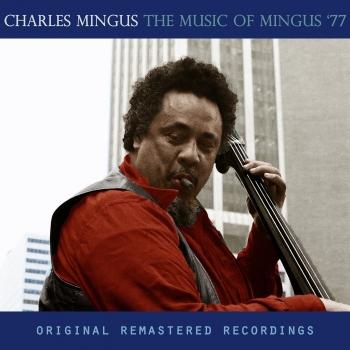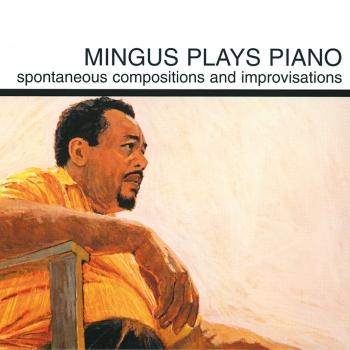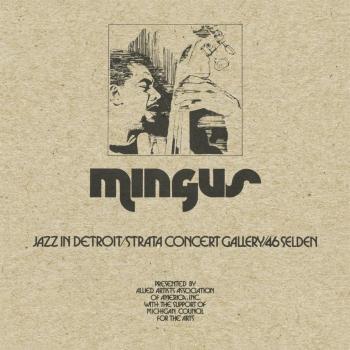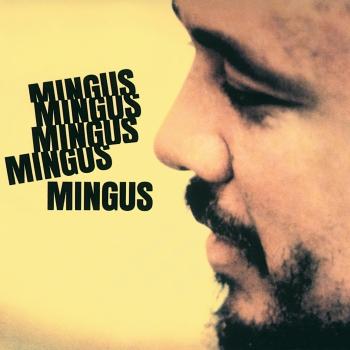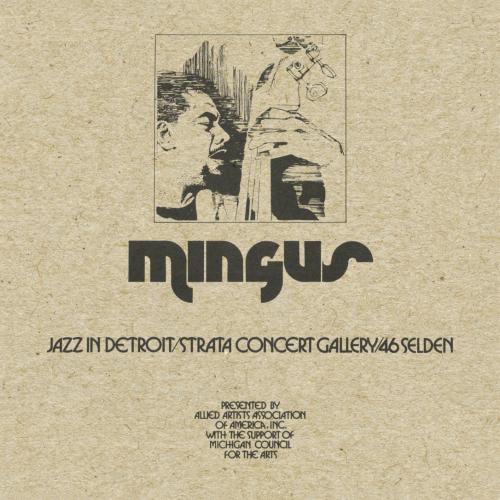
Jazz in Detroit / Strata Concert Gallery / 46 Selden Charles Mingus
Album Info
Album Veröffentlichung:
2018
HRA-Veröffentlichung:
21.03.2019
Das Album enthält Albumcover
Entschuldigen Sie bitte!
Sehr geehrter HIGHRESAUDIO Besucher,
leider kann das Album zurzeit aufgrund von Länder- und Lizenzbeschränkungen nicht gekauft werden oder uns liegt der offizielle Veröffentlichungstermin für Ihr Land noch nicht vor. Wir aktualisieren unsere Veröffentlichungstermine ein- bis zweimal die Woche. Bitte schauen Sie ab und zu mal wieder rein.
Wir empfehlen Ihnen das Album auf Ihre Merkliste zu setzen.
Wir bedanken uns für Ihr Verständnis und Ihre Geduld.
Ihr, HIGHRESAUDIO
- 1 Pithecanthropus Erectus 25:04
- 2 The Man Who Never Sleeps 15:04
- 3 Peggy's Blue Skylight 18:14
- 4 Introduction by Bud Spangler / Celia 23:35
- 5 Bud Spangler Interview with Roy Brooks and Commentary 38:59
- 6 C Jam Blues 26:58
- 7 Orange Was the Color of Her Dress, Then Blue Silk 20:12
- 8 Dizzy Profile 12:52
- 9 Noddin' Ya Head Blues 25:59
- 10 Celia (Alternate Take) 24:15
- 11 Dizzy Profile (Alternate Take) 12:00
- 12 Strata Gallery Announcement / Radio Broadcast WDET FM 06:49
- 13 Pithecanthropus Erectus (Alternate Take) 19:40
Info zu Jazz in Detroit / Strata Concert Gallery / 46 Selden
Sensationell! Zufällig aufgefundener Konzertmitschnitt des Charles Mingus Quintett vom Februar 1973. Diese Box beruht auf einem echten Sensationsfund, den Amir Abdullah im Zuge der Strata- Wiederveröffentlichungen machte. Sie enthält fünf Tonträger mit Stücken, die Charles Mingus während einer einwöchigen Residenz in Chicago im Februar des Jahres 1973 mit seinem Quintett bei einem einmaligen Auftritt performte.
Der Gig fand bei Kenny und Barbara Cox, und damit dem Strata-Headquarter, in 46 Seldon statt. Eintritt im Vorverkauf 5 Dollar, an der Abendkasse 6 Dollar. Weil das Geschehen von dem Schlagzeuger, Produzenten und Rundfunkredakteur Robert "Bud" Spangler bei dem lokalen Jazzsender WDET FM gesendet und aufgezeichnet wurde, blieb das Konzert der Nachwelt erhalten.
Die Bänder verstaubten auf dem Dachboden von Hermine Brooks, der Witwe des innovativen Detroiter Drummers Roy Brooks. Dort entdeckte sie Amir Abdullah ganz zufällig. Sie präsentieren Mingus' letzte große Formation mit dem seinerzeit neu hinzugestoßenen Pianisten Don Pullen.
Der 1979 verstorbene Kontrabassist, Komponist und Bandleader litt unter amyotropher Lateralsklerose und konnte in seinen letzten Lebensjahren nicht mehr musizieren.
Charles Mingus, bass
Roy Brooks, drums, saw
Don Pullen, piano
John Stubblefield, tenor saxophone
Joe Gardner, trumpet
Recorded February 13th, 1973, at the Strata Concert Gallery
Digitally remastered
Charles Mingus
One of the most important figures in twentieth century American music, Charles Mingus was a virtuoso bass player, accomplished pianist, bandleader and composer. Born on a military base in Nogales, Arizona in 1922 and raised in Watts, California, his earliest musical influences came from the church– choir and group singing– and from “hearing Duke Ellington over the radio when [he] was eight years old.” He studied double bass and composition in a formal way (five years with H. Rheinshagen, principal bassist of the New York Philharmonic, and compositional techniques with the legendary Lloyd Reese) while absorbing vernacular music from the great jazz masters, first-hand. His early professional experience, in the 40′s, found him touring with bands like Louis Armstrong, Kid Ory and Lionel Hampton.
Eventually he settled in New York where he played and recorded with the leading musicians of the 1950′s– Charlie Parker, Miles Davis, Bud Powell, Art Tatum and Duke Ellington himself. One of the few bassists to do so, Mingus quickly developed as a leader of musicians. He was also an accomplished pianist who could have made a career playing that instrument. By the mid-50′s he had formed his own publishing and recording companies to protect and document his growing repertoire of original music. He also founded the “Jazz Workshop,” a group which enabled young composers to have their new works performed in concert and on recordings.
Mingus soon found himself at the forefront of the avant-garde. His recordings bear witness to the extraordinarily creative body of work that followed. They include: Pithecanthropus Erectus, The Clown, Tijuana Moods, Mingus Dynasty, Mingus Ah Um, The Black Saint and the Sinner Lady, Cumbia and Jazz Fusion, Let My Children Hear Music. He recorded over a hundred albums and wrote over three hundred scores.
Although he wrote his first concert piece, “Half-Mast Inhibition,” when he was seventeen years old, it was not recorded until twenty years later by a 22-piece orchestra with Gunther Schuller conducting. It was the presentation of “Revelations” which combined jazz and classical idioms, at the 1955 Brandeis Festival of the Creative Arts, that established him as one of the foremost jazz composers of his day.
In 1971 Mingus was awarded the Slee Chair of Music and spent a semester teaching composition at the State University of New York at Buffalo. In the same year his autobiography, Beneath the Underdog, was published by Knopf. In 1972 it appeared in a Bantam paperback and was reissued after his death, in 1980, by Viking/Penguin and again by Pantheon Books, in 1991. In 1972 he also re-signed with Columbia Records. His music was performed frequently by ballet companies, and Alvin Ailey choreographed an hour program called “The Mingus Dances” during a 1972 collaboration with the Robert Joffrey Ballet Company.
He toured extensively throughout Europe, Japan, Canada, South America and the United States until the end of 1977 when he was diagnosed as having a rare nerve disease, Amyotropic Lateral Sclerosis. He was confined to a wheelchair, and although he was no longer able to write music on paper or compose at the piano, his last works were sung into a tape recorder.
From the 1960′s until his death in 1979 at age 56, Mingus remained in the forefront of American music. When asked to comment on his accomplishments, Mingus said that his abilities as a bassist were the result of hard work but that his talent for composition came from God.
Mingus received grants from the National Endowment for the Arts, The Smithsonian Institute, and the Guggenheim Foundation (two grants). He also received an honorary degree from Brandeis and an award from Yale University. At a memorial following Mingus’ death, Steve Schlesinger of the Guggenheim Foundation commented that Mingus was one of the few artists who received two grants and added: “I look forward to the day when we can transcend labels like jazz and acknowledge Charles Mingus as the major American composer that he is.” The New Yorker wrote: “For sheer melodic and rhythmic and structural originality, his compositions may equal anything written in western music in the twentieth century.”
He died in Mexico on January 5, 1979, and his wife, Sue Graham Mingus, scattered his ashes in the Ganges River in India. Both New York City and Washington, D.C. honored him posthumously with a “Charles Mingus Day.” (Source: www.mingusmingusmingus.com)
Dieses Album enthält kein Booklet















